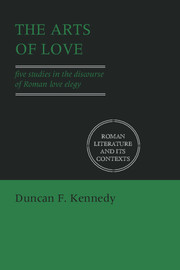3 - Love's figures and tropes
Published online by Cambridge University Press: 05 June 2012
Summary
When we set out to describe some thing or experience, we inevitably find ourselves using terms that are also applicable to other things or experiences. Think of the way we talk about arguments and theories. Arguments may be without foundation; it may be necessary to build up more evidence to support a theory, or shore up an argument to prevent it being undermined, or collapsing or being demolished. In English, one way of describing an argument is in terms which can also be used to describe buildings. Arguments are constructed, and, these days, deconstructed; they may be said to have, or lack, structure. There are other ways: it is possible to talk of arguments in terms also used to describe war. In an argument, an opponent can attack an idea; an argument can be challenged, defended, won and lost; an argument can be said to be tactical or a strategy. This can be taken one step further. If an argument is described as labyrinthine, its complexity is suggested by the use of an adjective that recalls the most anfractuous of buildings, out of which Theseus had to find his way; the use of the word to describe an argument also alludes to the way that the process of argumentation is described in terms also applicable to traversing ground.
- Type
- Chapter
- Information
- The Arts of LoveFive Studies in the Discourse of Roman Love Elegy, pp. 46 - 63Publisher: Cambridge University PressPrint publication year: 1992



